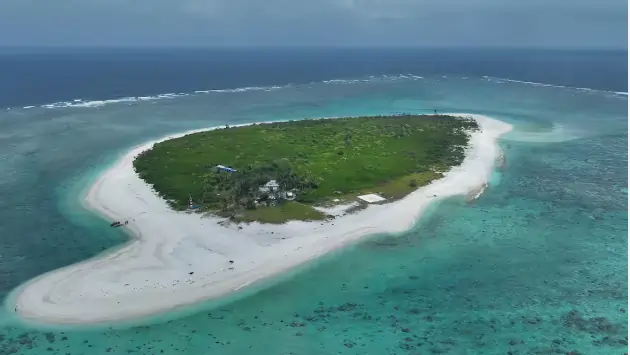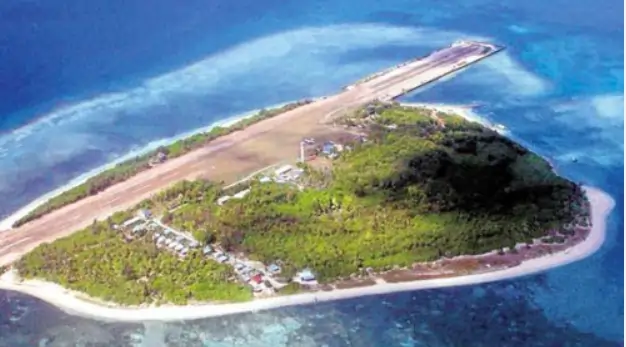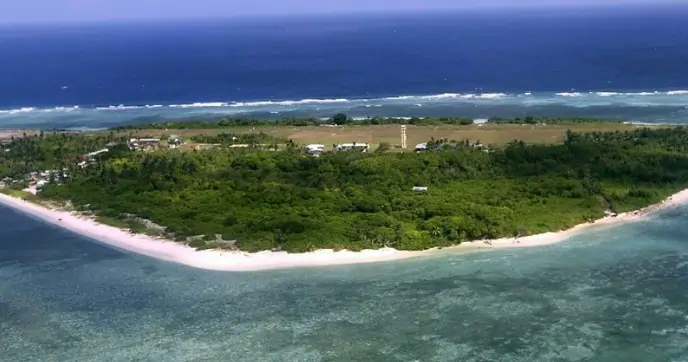

🃏 West Philippine Sea: Geopolitics, Resources & Human Impact
📝 Introduction
Welcome to the West Philippine Sea, a region teeming with geopolitical intrigue, rich resources, and significant environmental concerns. This vast body of water is not just a critical area for its neighboring countries but also for global trade and ecological balance.
This article explores the complex dynamics of the West Philippine Sea, delving into its geopolitical significance, abundant resources, and the environmental impact of human activities.
ADVERTISEMENT

🌍 The Geopolitical Landscape
🕰️ Historical Claims and Controversies
The West Philippine Sea, part of the larger South China Sea, has been a focal point of historical claims and territorial disputes. These waters are claimed by several nations, including the Philippines, China, Vietnam, Malaysia, Brunei, and Taiwan.
Each country bases its claims on historical usage, exploration, and various treaties. For instance, China’s “nine-dash line” map claims a vast portion of the sea, a claim rooted in historical records dating back centuries.
The Philippines, on the other hand, bases its claim on the United Nations Convention on the Law of the Sea (UNCLOS), which grants nations rights to waters within 200 nautical miles of their shores.
🔄 Recent Political Developments
Recent years have seen heightened tensions and diplomatic efforts to address these disputes. The 2016 ruling by the Permanent Court of Arbitration in The Hague, which favored the Philippines over China, marked a significant legal development.
However, the ruling has been largely ignored by China, leading to ongoing standoffs and militarization in the region. Countries continue to conduct naval patrols and military exercises, underlining the strategic importance of these waters.
🚢 Strategic Importance
The West Philippine Sea’s strategic importance cannot be overstated. It is a crucial maritime route, with a significant portion of the world’s trade passing through its waters.
Additionally, it serves as a buffer zone and a point of control for military forces. The presence of various navies, including the United States, underscores the region’s importance in global security and commerce.

💎 Riches Beneath the Waves
🐟 Abundant Marine Resources
The West Philippine Sea is incredibly rich in marine resources. It is one of the most biodiverse regions globally, supporting a wide array of fish species, which are vital for the livelihoods of millions of people in the surrounding coastal areas.
Fisheries in this region are among the most productive, supplying food to local populations and contributing significantly to the economy.
⛽ Underwater Treasures: Oil and Gas
Beyond fish, the seabed of the West Philippine Sea holds vast reserves of oil and natural gas. These resources have spurred exploration efforts, with various countries vying for control over lucrative drilling rights.
The potential energy reserves are a critical factor in the territorial disputes, as they promise substantial economic benefits.
ADVERTISEMENT

🌿 Environmental Marvels and Challenges
🌺 Unique Ecosystems and Biodiversity
The West Philippine Sea boasts unique ecosystems, including vibrant coral reefs, mangroves, and seagrass beds.
These habitats support a diverse range of marine life, from tiny plankton to large marine mammals. Coral reefs, in particular, are hotspots of biodiversity, providing shelter and breeding grounds for many species.
⚠️ Threats to the Marine Environment
However, the region faces significant environmental threats. Overfishing, often driven by illegal, unreported, and unregulated (IUU) fishing practices, has led to the depletion of fish stocks.
Pollution, from both land-based sources and maritime activities, further degrades the marine environment. Coral bleaching, driven by climate change, is another critical issue, threatening the vibrant coral reefs that are crucial for marine biodiversity.
ADVERTISEMENT

🌱 Environmental Conservation Efforts
🌐 International Cooperation and Agreements
Efforts to protect the West Philippine Sea’s environment involve international cooperation. Agreements under the United Nations Convention on the Law of the Sea (UNCLOS) provide frameworks for managing marine resources sustainably and protecting the marine environment. Regional collaborations, such as the Coral Triangle Initiative, aim to preserve marine biodiversity and promote sustainable fisheries.
🌟 Local Initiatives and Success Stories
Local conservation initiatives also play a vital role. Community-led projects in coastal areas focus on sustainable fishing practices, marine protected areas, and mangrove reforestation.
These initiatives have shown positive results, enhancing fish stocks and restoring vital habitats. Innovative solutions, such as eco-friendly aquaculture and artificial reefs, are being implemented to mitigate environmental damage and promote sustainability.

👨👩👧👦 Human Impact and Local Communities
🚣 Life of Fisherfolk and Coastal Residents
The daily lives of fisherfolk and coastal residents are deeply intertwined with the West Philippine Sea. Fishing is not just an economic activity but also a cultural tradition.
However, these communities face challenges such as declining fish stocks, competition from industrial fishing fleets, and environmental degradation.
💼 Economic Dependencies
The economy of the coastal communities is heavily dependent on the sea. The fishing industry provides employment and sustenance, while tourism, driven by the region’s natural beauty, also contributes to local economies. Balancing economic activities with environmental conservation is crucial for sustainable development.
ADVERTISEMENT

⚖️ Legal and Diplomatic Efforts
🌍 The Role of International Law
International law, particularly the United Nations Convention on the Law of the Sea (UNCLOS), plays a pivotal role in the West Philippine Sea disputes.
UNCLOS defines the rights and responsibilities of nations concerning the use of the world’s oceans, establishing guidelines for businesses, the environment, and the management of marine natural resources.
The 2016 ruling by the Permanent Court of Arbitration, which invalidated China’s extensive claims, was a significant application of UNCLOS principles.
🕊️ Diplomatic Talks and Tensions
Diplomatic efforts to resolve the West Philippine Sea disputes continue, with various countries engaging in bilateral and multilateral talks.
However, tensions remain high, with incidents of confrontations between naval forces and fishing vessels.
The involvement of major powers, such as the United States, adds another layer of complexity to the diplomatic landscape.
🔮 Future Prospects and Challenges
🌍 Environmental Sustainability
Ensuring the environmental sustainability of the West Philippine Sea is a significant challenge. Long-term conservation goals include expanding marine protected areas, promoting sustainable fishing practices, and addressing climate change impacts.
Achieving these goals requires concerted efforts from all stakeholders, including governments, local communities, and international organizations.
🕊️ Geopolitical Stability
Achieving geopolitical stability in the West Philippine Sea is equally challenging. The overlapping claims and strategic interests of various nations make it a hotspot for potential conflict.
Building trust and cooperation through diplomatic channels and international law is essential for peace and stability in the region.
🎤 Voices from the Sea: Personal Stories
🐟 Interviews with Fishermen and Environmentalists
Hearing directly from those affected by the West Philippine Sea disputes provides valuable insights.
Fishermen share their daily struggles and the impact of declining fish stocks, while environmentalists highlight the urgent need for conservation efforts. These personal stories bring a human element to the complex issues at play.
🏘️ Case Studies of Affected Communities
Case studies of communities affected by the West Philippine Sea disputes illustrate the broader impact.
For instance, coastal villages in the Philippines have implemented sustainable fishing practices, leading to improved fish stocks and community resilience. These examples showcase the potential for positive change through local action.
💡Frequently Asked Questions about the West Philippine Sea
What is the West Philippine Sea?
The West Philippine Sea refers to the portion of the South China Sea that is included in the Philippines’ exclusive economic zone (EEZ). It is rich in marine resources and has significant geopolitical importance.
Why is the West Philippine Sea geopolitically significant?
The West Philippine Sea is geopolitically significant due to its strategic location, abundant natural resources, and the territorial disputes involving several countries. It is also a major shipping route, making it crucial for global trade.
What resources are found in the West Philippine Sea?
The West Philippine Sea is rich in marine resources, including diverse fish species and coral reefs. It also has significant reserves of oil and natural gas, making it a valuable area for energy exploration.
What are the environmental challenges in the West Philippine Sea?
The main environmental challenges in the West Philippine Sea include overfishing, pollution, and coral reef degradation. Illegal, unreported, and unregulated (IUU) fishing practices are also a significant problem.
How does international law affect the West Philippine Sea disputes?
International law, particularly the United Nations Convention on the Law of the Sea (UNCLOS), plays a critical role in the West Philippine Sea disputes. UNCLOS defines the maritime boundaries and rights of coastal nations, and its rulings, such as the 2016 arbitration in favor of the Philippines, are key to resolving these disputes.
📝 Conclusion
📚 Recap of Key Points
The West Philippine Sea is a region of immense geopolitical, economic, and environmental significance. Its rich marine resources, strategic location, and unique ecosystems make it a focal point of international attention.
However, the region also faces significant challenges, including territorial disputes, environmental degradation, and the need for sustainable development.
Addressing these challenges requires a multifaceted approach. International cooperation, sustainable practices, and robust legal frameworks are essential for ensuring the long-term health and stability of the West Philippine Sea.
By promoting awareness and action, we can contribute to a more sustainable and peaceful future for this vital region.
📚 References and Further Reading
- United Nations Convention on the Law of the Sea (UNCLOS
- Permanent Court of Arbitration – The South China Sea Arbitration (The Republic of the Philippines v. The People’s Republic of China)
- Coral Triangle Initiative –
- National Geographic – “The South China Sea’s Ticking Time Bomb”
- World Wildlife Fund (WWF) – “Marine Protected Areas: Conserving our Oceans
- Food and Agriculture Organization of the United Nations (FAO) – “Sustainable Fisheries and Aquaculture
People Also Search:
- West Philippine Sea issue
- West Philippine Sea map
- West Philippine Sea located
- West Philippine Sea News
- West Philippine Sea issue summary
- Who owns the West Philippine Sea
You May Also Like:
- Phfun
- taya777
- lodi646
- phwin
- betso88
- hot646
- 90jili
- uaap volleyball
- bingo plus
- casino plus
- bet88
- axiebet88
- milyon88
- minibet
- jilibee
- slotvip
- phdream
- bet888
- wow888
- bet88
- 77pnl
- jili
- me777
- phtaya
- 777 casino
- 8k8 casino
- jackpot bingo
- 684 casino
- 20bet
- jili77
- tg7777
- bet999
- Highwin8
- 747 casino
- arena plus
- 188jili
- colorplay
- jili22
- phbet
- wowph
- jollibee 777
- pwin777
- royal888
- bet86
- go jackpot
- primo gaming
- jili casino
- jilihot casino
- lucky diamond casino
- sugarplay
- dbx777
- betso89
- ezjili
- sulit777
- xojili
- jilibee casino
- lucky perya casino
- twg casino
- chumba casino
- 77ph
- bw777
- jackpot city casino
- panalobet
- lago777
- phpark
- cow88 online casino
- jilimacao
- golden casino
- allbet
- philboss 777
- sg777
- jiliko
- kingbet99
- okbet888
- casino plus
- jili casino
- pinoy luck casino
- mega888
- ta777
- ace super casino
- ph444 casino
- gogojili
- lucky cola
- wk777
- ph365 casino
- balato88
- lucky block casino
- phkilig online casino
- 22win
- jili711
- cloudbet
- phl63
- iwild casino
- fc777
- jollibee casino

Jen’s SEO’s journey into gaming analysis began five years ago when she first discovered her passion for understanding the intricacies of online gaming platforms. Armed with a background in statistics and a love for gaming, Jen’s embarked on a quest to unravel the mysteries behind player behavior, game mechanics, and market trends.
As a trusted advisor to gaming platforms, Jen’s plays a crucial role in strategic decision-making processes. By analyzing player demographics, engagement metrics, and market dynamics, Jen’s helps platforms identify growth opportunities, develop targeted marketing strategies, and optimize game portfolios to meet the evolving needs of players.



